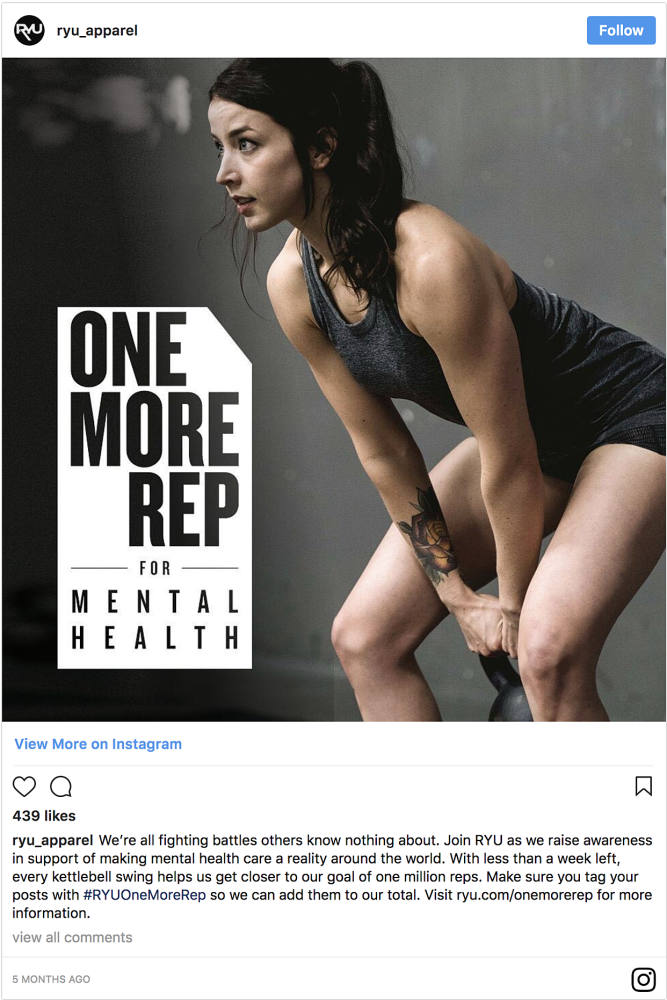//
Apr 25, 2018
How to Create an Unforgettable Social Media Campaign
Unless you’ve been living under a rock for the past 20+ years, you know what social media is and chances are you’re one of the people in the world who actively use it.
But if you’re a business owner or marketer, social media isn’t so much a choice, as it is a requirement (if you want to stay relevant in the eyes of your consumers, that is). So, in addition to regularly scheduled posts and social engagement, what else can you do to ensure you’re maximizing brand exposure? We’ve got three words for you—social media campaign.
Before we dive in, understanding the difference between a social campaign and your social strategy is important, because while the two are often used interchangeably, they are in fact different. By definition, a is a coordinated marketing effort to reinforce or assist with a business goal using one or more social media platforms. Your social media strategy, however, is essentially the foundation on which you build campaigns.
Your social media strategy efforts are long-term, often exceeding a year or more, with more generalized and lax goals or objectives. Your campaign, on the other hand, will typically only run for a few months and will have a very specific goal and message.

BE S.M.A.R.T, SET GOALS
Identifying and setting clear, concise goals is the first step in creating a successful campaign. When setting these goals, make sure you’re S.M.A.R.T about it. See what I did there? Most of you are already familiar with this concept, but for those who aren’t, S.M.A.R.T is an acronym for setting business-related goals such as sales quotas, website traffic and social media reach.

Following these guidelines when setting the goals of your campaign can make a huge difference in the development and execution phase of your campaign and can even affect how your target audience perceives your message. Because S.M.A.R.T goals are so important to your campaign’s success, don’t be afraid to spend a good amount of time when creating them.
RALLY THE TROOPS
Depending on the size of your company, your team could consist of two, five or even 20 of your top creative employees or coworkers to plan and carry out your campaign. In most cases, there are at least a couple of people on the team who have experience working on your social media and at least one that manages your social efforts on a day-to-day basis. Having an expert on your campaign team is vital because they already know your brand’s voice and your company’s audience.
SOCIAL MEDIA: ONE SIZE DOES NOT FIT ALL
With so many social channels to choose from, you may be thinking you need to post to all of them multiple times a day in order for your campaign to be successful. But remember, this isn’t your social media strategy and in order to cultivate the best results, you’ve got to do some research first. While many people use more than one social channel, they are actually used for different reasons—not every social channel is right for every campaign.

Learning the demographics of each social channel and how they differ from one platform to another can help you determine which one(s) you need to focus on.
BUYER PERSONAS: BUILD IT AND THEY WILL COME
Your entire campaign is designed around attracting and converting your ideal customer. But figuring out who that is? That’s where buyer personas come in. Their sole purpose is to help you better understand who your ideal customers are and learn things like their preferred form of communication, in what context they best absorb content and their specific, individual needs, interests and goals. The more detailed your persona, the better chance you have at attracting the right customers.
RELATED:
THE HEART OF YOUR CAMPAIGN: CONTENT
Now that you’ve set goals, gathered a team, determined which social networks you need to post to and created your buyer personas, it’s finally time to write! The following are a few things to keep in mind when writing the content for your campaign:
TAKE CHANCES
You can post to all the social sites out there, but if your content isn't grabbing the attention of your followers, you may as well not post anything at all. Don’t be afraid to take chances with your content, because you’ll never know what works and what doesn’t until you try it. Take Oreo for example, back in 2013, during the Super Bowl XLVII blackout, they tweeted this:

IMAGE SOURCE:
They saw an opportunity to promote their brand and they took it. Not through a highly-priced TV commercial but through a short, sweet and simple tweet. They capitalized on the 34 minute blackout and captivated the attention of the Twittersphere. Their post was retweeted over 10,000 times in one hour—now that’s something to celebrate.
CONSISTENCY IS KEY
While this goes for any type of content, both imagery and written copy, keeping a consistent voice and tone throughout the entirety of your social campaign is vital to ensuring its success. Your recurring followers and new visitors alike should be able to know it’s your brand by the message and tone alone. A brand that’s great at keeping consistency throughout all marketing channels is the WWF (World Wildlife Foundation).
\IMAGE SOURCE:
Their message and their cause is clear and consistent in all of their marketing collateral. They do a fantastic job in evoking emotion with their powerful images and content, often causing you to think about things like our Earth’s wildlife and ecosystems in a way you may not have before. As far as social campaigns and branding go, they know what they're doing.
QUALITY OVER QUANTITY
Once you’ve done your research, the next step is ensuring that what you’re sharing is top-notch content. Because again, if you’re not creating content that grabs your audience’s attention, you may as well hang up your 'social media campaign' hat and pack your bags because without the interest of your target audience, your campaign isn’t doing the one thing it’s supposed to do. Take RYU’s campaign to bring more awareness to mental health for example:

They encouraged their followers to take part in the movement by asking them to stop by one of their store locations or take a video of themselves swinging a kettlebell and posting it to social media using their designated campaign hashtag, #RYUOneMoreRep. Needless to say, the campaign was very successful and their content got RYU followers, new and old, involved. What’s more? They helped raise money and awareness for a good cause, all the while expanding their reach and increasing sales. Win-win.
ELICIT EMOTION
This is the big one. If your campaign can grab the attention of your audience and make them feel something at the same time, pat yourself on the back because that my friend, is a job well done! The three social campaigns featured above were successful for different reasons, but there was one thing they all had in common—they made people feel something. Just like campaign that was designed with one goal in mind: to make women feel empowered and comfortable in their own skin.

IMAGE SOURCE:
This campaign was a huge hit from the very start as they gained the attention of millions and portrayed their message in a way that every woman could relate to. They set the precedent for what a successful marketing campaign looks like.
So, whether it’s through a humorous or thought-provoking post, a contest that helps raise awareness for an important cause or even a brand that tugs at your heartstrings—they are all effective ways to increase your conversion rate.
As humans, we are driven by emotion—as marketers, we should be using that to our advantage, just as all the ones mentioned above have done.
POST, TRACK, REPEAT
You’ve spent countless hours writing content and posting to social media and now that your campaign is live, that means your job is done, right? Not quite yet. There is still the task of tracking your efforts by means of analytics. It’s the one way to prove that all those hours weren’t a waste of time and that all your hard work is, in fact, paying off. Your company probably already has an analytics tool that you use to track things like your blog, website traffic and social media efforts, separate from your campaign.
If you're not an expert in data analysis, assign someone on your team who is, to keep track of and measure the progress of each post throughout the duration of your social campaign. This part is crucial to learning what is and what’s not working and even helps to set the stage for what your next campaign will look like, based on the findings.
RELATED:
READY? SET. GO!
So, now that you have an idea of what it takes to run a social media campaign, are you ready to begin? It may seem a bit daunting at first, but we guarantee that if you’re passionate about your message and you consider all of the things mentioned above, it will feel more like a pastime activity than actual work! Not only is it effective, it’s also a fun way to grow your brand, increase your reach and ultimately gain new customers! What business doesn’t want that?







